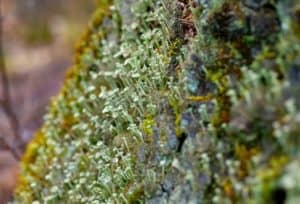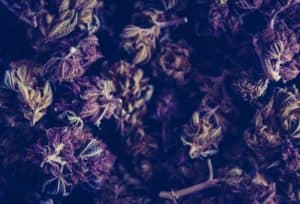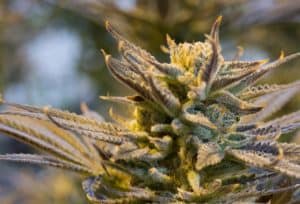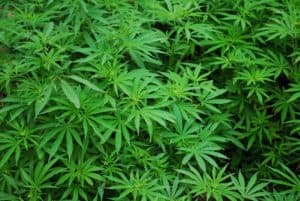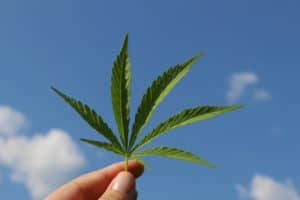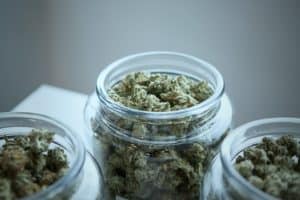THC peaks in hemp plants can cause some nasty consequences. That is because hemp plants can only contain small amounts of THC to preserve their legal classification. Crops that exceed the maximum THC limit are deemed “hot hemp” and must be destroyed.
This risk of having to completely destroy the crop is real and frightening for the farmers who grow these plants. If their plants were to experience an unexpected THC spike, time, effort, and money invested would be lost. Therefore, controlling THC spikes is critical in the hemp industry.
What causes THC spikes
The main reasons THC can spike in cannabis are the stressors the plant is subjected to. This opens up an interesting topic as to why environmental stresses lead to increased THC levels.
Studies has shown that THC seems to be the way the cannabis plant deals with its environmental stressors. When it begins to experience external stress of some kind, cannabis increases its THC production in what seems to be an attempt to protect itself.
This is actually how farmers who are seeking to increase the THC content of their cannabis plants do it: they expose their plants to more UV light, they deplete or overdose the plant’s nutrients, they expose it to colder temperatures, and so on. All of these different environmental stressors cause the cannabis to react in what appears to be a self-protective way, which results in THC spikes.
External factors can increase THC in hemp plants
A high THC content can occur for a number of reasons. These are often factors that are not so easy to manage.
Factors beyond your control, such as geography and weather, can affect certain levels of cannabinoids in hemp. Just as CBD and CBN can be improved by using certain growing methods, such as feeding nutrients, THC can increase unintentionally due to a number of pressures.
Many stressors are known to contribute to an increase in THC levels. Great temperature swings, droughts, floods, extreme nutrient feedings, and even high altitudes are some of the typical culprits.
Plants exposed to these conditions can react by suddenly increasing their THC content.
However, you do have some level of control over catching numbers before they become devastating. It just takes careful monitoring.
Seed sellers who advertise plants as low-THC hemp varieties aren’t telling the whole story. It may mean that some varieties tend to have lower THC levels. Still, that doesn’t mean the plants will have an acceptable THC range to be called hemp.
Some of those growers were angered by the fact that seed sellers promised them low THC but they weren’t. As with almost any farming practice, there are rarely 100% guarantees, especially when it comes to results like THC levels in hemp.
Be careful of the seed grower who promises you low THC levels. All hemp strains can potentially hit the danger zone.
Weekly testing is critical.
With THC, testing is key
The key is to know when you’re nearing that upper risk limit and harvest early enough so your hemp won’t exceed it.
Cut too early and you’ll likely just sacrifice higher yields and richer cannabinoid content. Yet if you cut too late you’ll risk a 100% loss in yield.
It’s always better to be safe than sorry.
Protecting yourself from exceeding the imposed 0.3% limit will be one of the biggest challenges you’ll face as a hemp grower.
Since there is no way to physically look at a hemp plant and know its THC percentage, you will have to rely on hard numbers.
From the very first signs of flowering, you should test your plants often, ideally once a week.
Since THC percentages can swing for a number of reasons during the growth cycle – climate, genetics and feeding routines are some contributing factors – it can be difficult to determine exactly when you’re approaching a critical percentage point.
Testing will tell you exactly how close to that limit your plants are.
How to prevent THC spikes
Although several stressors can impact hemp THC levels negatively, there are ways farmers can work to control them.
For example, greenhouse operations allow farmers to better control the level of ultraviolet light that plants come into contact with, as well as the temperature at which they grow. It is also easier to monitor nutrient regimes in greenhouse crops. Growing hemp in a greenhouse environment is a very safe way to ensure that hemp plants stay on the right track.
Unfortunately, some places do not allow indoor growing environments for hemp. Still, that doesn’t mean it’s impossible to grow low-THC hemp outdoors. For example, low-altitude areas can help protect crops from strong UV rays. Likewise, mild climates also help ensure a more abundant outdoor growth.
Whether you’re growing your hemp crop outdoors or in a greenhouse, making sure you have quality hemp seeds from the start will also give your final crop a better chance of success.
Reducing the potential for THC spikes in hemp crops is extremely important for farmers. Experiencing THC spikes could lead to the “hot hemp” state and the ultimate destruction of your crop. This, of course, will cost farmers a lot of time and money given the strict nature of the USDA’s recently proposed hemp growing laws.

